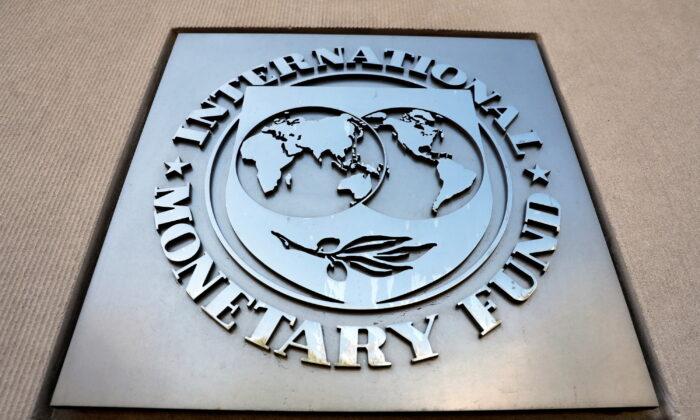Global public debt is expected to surge faster than in years prior to the coronavirus pandemic, and to continue rising over the next few years, according to a new report from the International Monetary Fund (IMF).
The United States and China have mainly contributed to this upward trend. If these economies were excluded from the calculations, “the public debt-to-GDP [gross domestic product] ratio would be going down” worldwide, said Vitor Gaspar, director of the IMF’s fiscal affairs department.
“Public debt in the world is expected to reach almost 100 percent of GDP, back to the record level set in the year of the pandemic,” he said in an address to reporters on April 11.
Estimates suggest that global government debt will be equal to 93.3 percent of GDP this year, soaring to 99.6 percent by 2028. By comparison, in 2018, the debt-to-GDP ratio was 82.8 percent.
In the United States, public debt to GDP is projected to rise by 3 percentage points every year and exceed 136 percent by 2028. In China, this figure will surpass 100 percent within the next five years.

That said, other larger advanced and emerging market economies are seeing rapid growth in the public debt-to-GDP ratio, including Brazil, Japan, South Africa, Turkey, and the United Kingdom.
Fiscal Restraint Is Key
Government-debt levels in major economies could surpass the IMF’s forecasts, citing increases in military spending and government subsidies to support domestic industries. Moreover, the report warned that other fiscal efforts of the past couple of years, such as price controls, subsidies, and profit limitations on state-owned corporations, could “make inflation more persistent.”“As during the recent episode, some countries have adopted price controls or subsidies, put the squeeze on profits of state-owned enterprises, or cut taxes to try limit price increases and inflation,” the report states. “However, such actions can be costly to the budget, lead to shortages and rationing, and prove ultimately ineffective, and potentially make inflation more persistent.”
The report attributed the significant public debt increase to higher interest payments on this debt. Over the past year, central banks worldwide have engaged in aggressive monetary policy tightening, which has impacted debt-servicing payments. Should governments maintain their high spending and borrowing patterns, inflationary pressures could linger or be revived, offsetting gains that central banks may have made in the past 12 months.
“Rising real interest rates increase borrowing costs for countries, making this management more challenging for countries dependent on foreign currency borrowing,” Gaspar stated. “Tighter global financing conditions are also a source of pressure as exchange-rate depreciation can lead to significant surges in debt.”
It’s important, the IMF argued, that fiscal tightening complements monetary tightening in overall efforts to restore price stability. The chief priority for governments everywhere is to mitigate “debt vulnerabilities” and rebuild “fiscal buffers” over time that can be utilized to cushion the blows of a financial crisis. Without these buffers, economies, especially developing markets, could endure deeper and longer recessions and pose substantial risks to “vulnerable groups,” such as low-income households.
“Countries should step up efforts to develop credible risk-based fiscal frameworks that reduce debt vulnerabilities over time and build up the necessary room to handle future shocks,” the report states.
What About a Banking Crisis?
Echoing previous remarks this week at the 2023 Spring Meetings, the Fiscal Monitor report warned that the rising-rate climate “may create complications for financial stability, as seen in recent financial turbulence in the United States and Europe.” However, if the banking turbulence is contained, then restoring price stability must continue to be the top objective for policymakers.Ultimately, the recent turmoil in the banking sector still presents heightened risks of a financial crisis, which would undermine initiatives to improve government balance sheets.
“Among the worst possible crises are crises where you have a financial crisis simultaneously with a sovereign debt crisis, and that is something labeled as the ‘doom loop,’” Gaspar said. “Doom loops must be avoided.”





